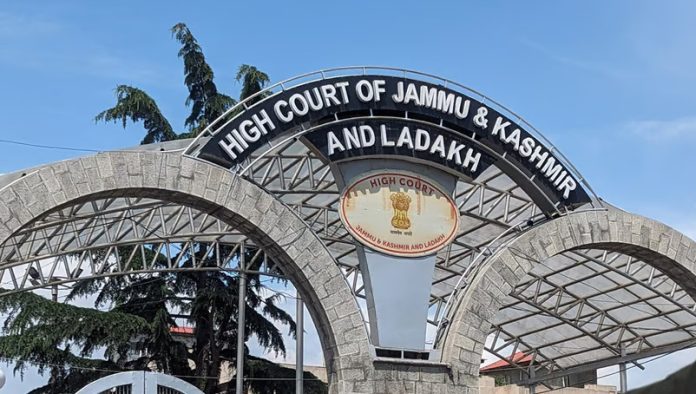Thottathil B. Radhakrishnan, J.@mdashThe petitioner, a scheduled bank, extended a housing loan to the second respondent. Though she was repaying it, she sought relief under the Kerala Farmers'' Debt Relief Commission Act, 2006, hereinafter referred to as the "Act" in relation to that loan and another facility availed from a different establishment. By the impugned Ext.P3 order, the Kerala Farmers'' Debt Relief Commission, hereinafter, the "Commission", for short, directed, among other things, that the second respondent herein is entitled to debt relief to the extent of 50% in so far as the housing loan is concerned. This is under challenge.
2. The petitioner''s contentions are two fold. First is that the Act does not apply to housing loans in view of the definition of ''debt'' as contained in the Act. Next is that the action taken u/s 5 of the Act is without jurisdiction in as much as a scheduled bank, if at all, could be subjected only to proceedings under Sections 9 or 10 of the Act providing only for rescheduling of loans, one time settlement etc. Noorder granting any relief by slashing the outstandings could be issued, it is contended.
3. In her counter affidavit, the second respondent does not dispute the petitioner''s plea that it is a scheduled bank. She states that she had been discharging the debt due to the petitioner to the best of her ability. She contends that the plea of the petitioner that a housing loan does not fall within the provisions of the Act, is untenable.
4. The petitioner is a scheduled bank. It is, therefore, an "institutional creditor" in terms of Section 2(xvi) of the Act. "Debt", as defined in Section 2(vii), includes any sum payable to an institutional creditor. This inclusive component is prescribed after stating that debt means any liability, whether secured or unsecured due from a farmer on or before the commencement of the Act, whether payable under a contract, or under a decree or order of any Court or Tribunal, or otherwise. Petitioner does not dispute that the second respondent is a farmer as defined in Section 2(xiii) of the Act.
5. Does a housing loan amount to a debt for the purpose of the Act?
6. The exclusionary clause in Section 2(vii) becomes relevant. After defining a debt by stating as to what it means and also by enumerating what it includes, Section 2(vii) provides that debt does not include any loan amount taken by the farmer for commercial purposes or luxury other than agricultural allied commercial purposes, to augment his income and the amount payable to Central or State Governments or other State Governments or Governments of Union Territories and the amount due to Local Self Government Institutions, Statutory Bodies, Central or State Public Sector Undertakings and other Institutions as may be specified by the Government by notification. The petitioner does not have a case that it falls within the scope of any of the institutions so excluded. It is a co-operative bank. It is a scheduled bank. "Debt", as already noticed, means any liability. The exclusion is of loan amounts taken for commercial purposes or luxury, other than agricultural allied commercial purposes, to augment income. The words "other than agricultural allied commercial purposes" in the second limb of Section 2(vii), essentially qualify the phrase "for commercial purposes". Therefore, loan amounts taken for commercial purposes other than agricultural allied commercial purposes are excluded from the definition of debt. The loan amounts taken for luxury are also excluded. Housing loan is neither a loan for a commercial purpose nor one taken to augment income. The purpose is to provide a home. It is not a luxury. The State shall strive to promote the welfare of the people by securing and protecting as effectively as it may, a social order in which justice, social, economic and political, shall inform all the institutions of the national life. The State shall regard the raising of the standard of living of its people as among its primary duties. The State shall, in particular, direct its policy towards securing that the ownership and control of the material resources of the community are so distributed as best to subserve the common good and that the operation of the economic system does not result in the concentration of wealth to the common detriment. These principles are well engraved in the Directive Principles of State Policy which stand to advise the national growth. Right to shelter is a fundamental right, which springs from right to residence under Article 19(1)(e) and right to life under Article 21. Food, shelter and clothing are minimal human right. The right to residence and settlement is a fundamental right under Article 19(1)(e) and it is an inseparable and meaningful facet of right to life under Article 21. To make this right meaningful to the poor, the State has to provide facilities and opportunities to build a house. Profitable reference could be made in this context to the decisions of the Apex Court in
7. In the case in hand, the amount of loan availed by the second respondent is only Rs. 1 lakh. I notice this to assure that this is not a loan that could be characterised as a luxurious one even in the housing sector. May be that the principles of law and the constitutional conspectus noted by me in the preceding paragraph would not apply to housing loans which are loans for luxurious houses when compared to the ground reality situation of providing a homestead as a shelter.
8. Can a debt availed by a farmer from an institutional creditor be subjected to Section 5 of the Act? If not, what provisions, if any, applies ?
9. In enumerating the powers and functions of the Commission, the Act keeps the institutional creditors away from the jurisdiction of the Commission u/s 5, Sub-sections (1) and (2) of Section 5 clearly exclude debts of farmers due to institutional creditors from the purview of those provisions. Therefore, no action can be taken by the Commission as are referable to Sub-sections (1) to (5) of Section 5 of the Act, as against an institutional creditor or in relation to a debt payable by a farmer to an institutional creditor.
10. Section 9 provides special provisions in respect of settlement of certain loans taken by farmers and Section 10 provides for rescheduling of loans taken by a farmer from a financial institution. Unlike in Section 5, there is no exclusion of institutional creditors from the purview of those provisions. Those provisions, to the extent they could be applied, could regulate the loans availed by farmers from institutional creditors and the Commission would be within its jurisdiction to do the needful in accordance with law in terms of those provisions.
11. For the aforesaid reasons, the challenge to Ext.P3 partly succeeds, i.e., to the extent that the Commission has ordered debt relief in so far as it relates to the housing loan availed by the second respondent from the petitioner.
In the result, this Writ Petition is ordered quashing Ext.P3 in so far as it is against the petitioner and it is further ordered that this judgment will not stand in the way of the second respondent obtaining relief from the Commission in terms of Sections 9 and 10 of the Act as regards the housing loan availed by her from the petitioner. No costs.

